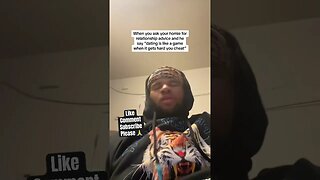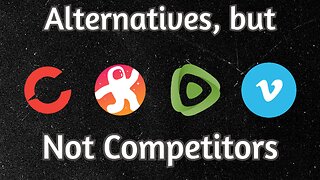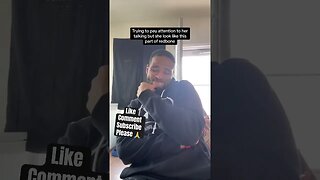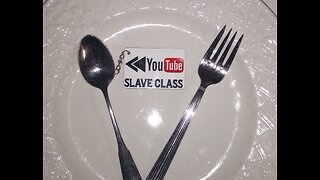My 4 Year Tour in YouTube HELL 🔥 #shorts #tiktok #RUMBLE #Twitter #X #Truth
Please Support The Channel
50% of all channel support (after fees & tax) will go to a private Moon mission
Patreon: https://www.patreon.com/user?u=37594401
Buy Me A Coffee?: https://www.buymeacoffee.com/whats.next
Donate With Cash App: https://cash.app/$YTpayments
Social Media
YouTube - / @whatsnextvideos
Rumble - https://rumble.com/user/WhatsNextVids
Tiktok - https://www.tiktok.com/@whatsnextvids
X - https://twitter.com/WhatsNe75388303
Why is YouTube so terrible for small, original content creators these days?
YouTube’s Algorithm and Content Discovery Approach: YouTube’s algorithm and content discovery approach heavily favor channels that cater to a specific niche or topic. The platform tends to promote creators who consistently produce content within a particular genre or theme, leading to the pigeonholing of creators into specific categories. This can be detrimental to small creators who want to explore different types of content or who do not fit neatly into one specific niche.
Challenges Faced by Small Creators: Small creators often struggle on YouTube because the platform prioritizes established channels and tends to promote content that aligns with viewers’ previous preferences. This can make it difficult for new creators to break through and attract a wider audience, especially if they produce diverse content that does not fit neatly into a single category.
Impact on Content Diversity and Creativity: The focus on promoting “winners” in specific categories can stifle creativity and limit the diversity of content available on the platform. Small creators who are experimenting with different types of content may find it challenging to gain visibility and grow their audience, leading to a homogenization of content as creators feel pressured to conform to established trends.
Strategies for Small Creators: To navigate these challenges, small creators can employ various strategies to build their audience and maintain creative freedom. These strategies include encouraging viewers to subscribe and engage with their content, establishing a strong visual identity, managing older videos that no longer align with their current focus, building an audience outside of YouTube, and exploring alternative platforms that may better support experimentation and creativity.
In conclusion, YouTube’s algorithmic approach and emphasis on niche content can pose significant challenges for small, original content creators looking to diversify their offerings and reach a broader audience. While the platform remains dominant in the online video space, its limitations for smaller creators highlight the need for more inclusive approaches that support creativity and innovation.
-
 0:15
0:15
SeemlyTuber
7 months agoWhen they help you and bring it up… tiktoks friends shorts reactions seemlytuber #viral #explore
4 -
 0:05
0:05
SeemlyTuber
7 months agoWhen you ask your homie for advice… tiktoks shorts reacts seemlytuber #comedy #funnyreel
2 -
 0:15
0:15
SeemlyTuber
7 months agoYou ever do this more than you talk to people? Tiktoks shorts viral #explore #viral seemlytuber
4 -
 24:09
24:09
Hyprr Khaotic
1 month agoYT Shorts is Carrying Youtube. Not Killing it.
4 -
 40:15
40:15
Hyprr Khaotic
1 month agoWhich Alternative is A True Competitor To Youtube?
321 -
 0:08
0:08
SeemlyTuber
7 months agoWhen you meet someone that look this good.. tiktoks shorts dating reactions #viral #explore #shorts
18 -
 0:05
0:05
SeemlyTuber
7 months agoWhen your homie ask about your ex… tiktoks shorts reacts #comedy #funnyreel seemlytuber #funny
4 -
 0:08
0:08
SeemlyTuber
7 months agoWhen they hurt you then say they love you… tiktoks shorts reactions #dating #breakup skits
2 -
 0:05
0:05
SeemlyTuber
7 months agoWhen she tells you about her day… tiktoks shorts dating funny #comedy #funnyreel #funny seemlytuber
4 -
 2:00:56
2:00:56
CaucAsianSasquatch
1 month agoYouTubeSlaveClass: 1. Creator Thoughts
68